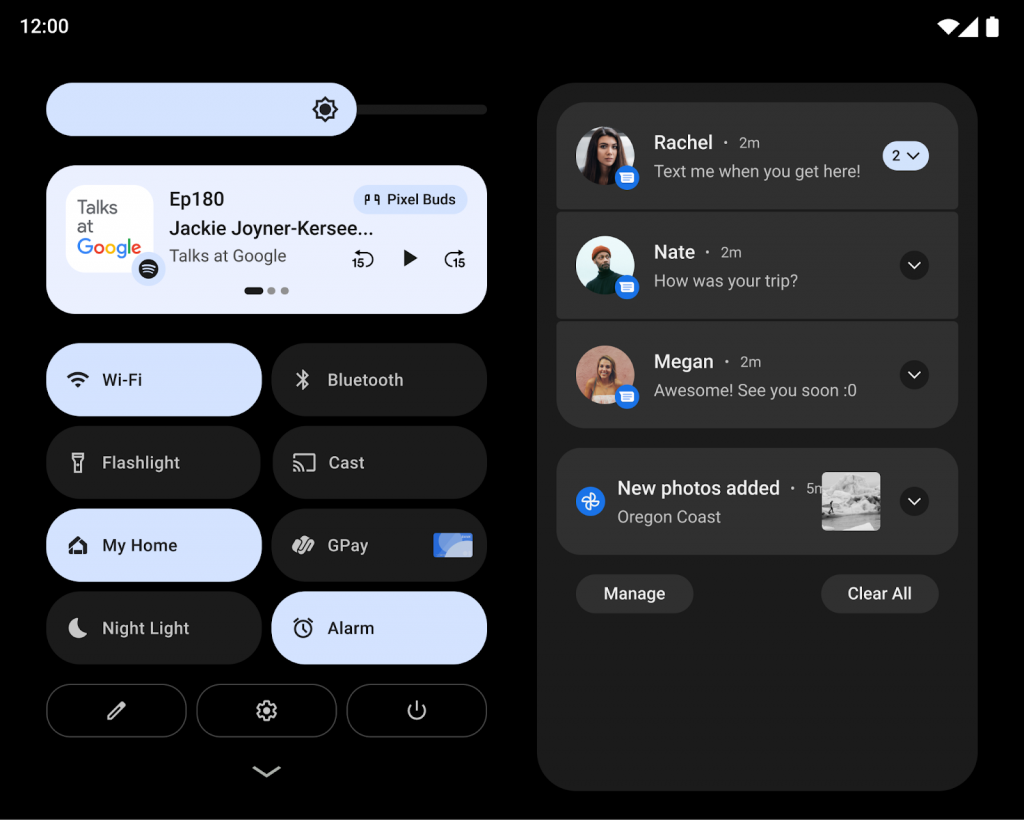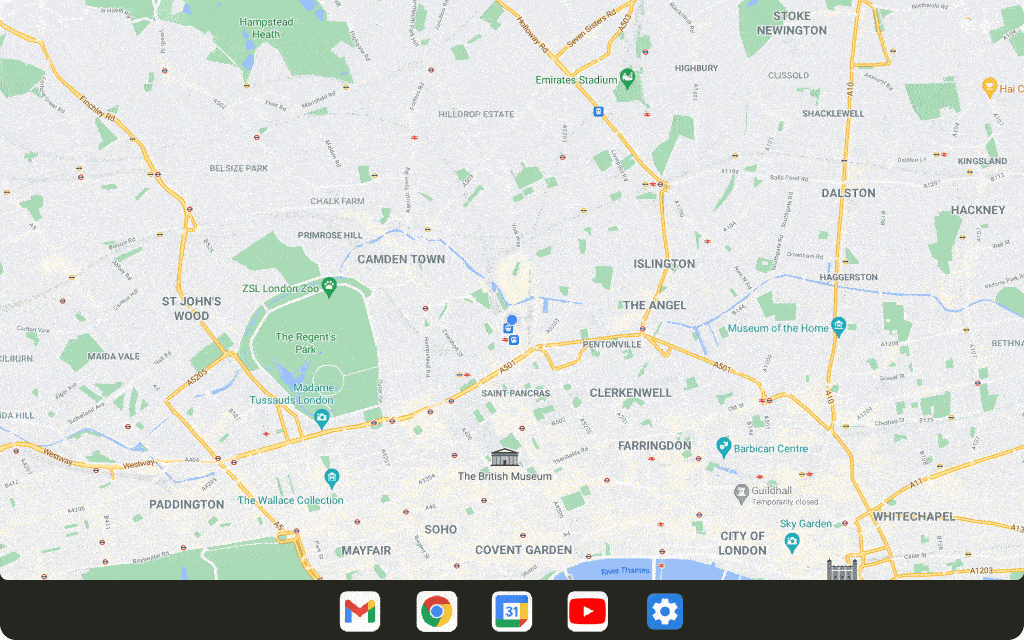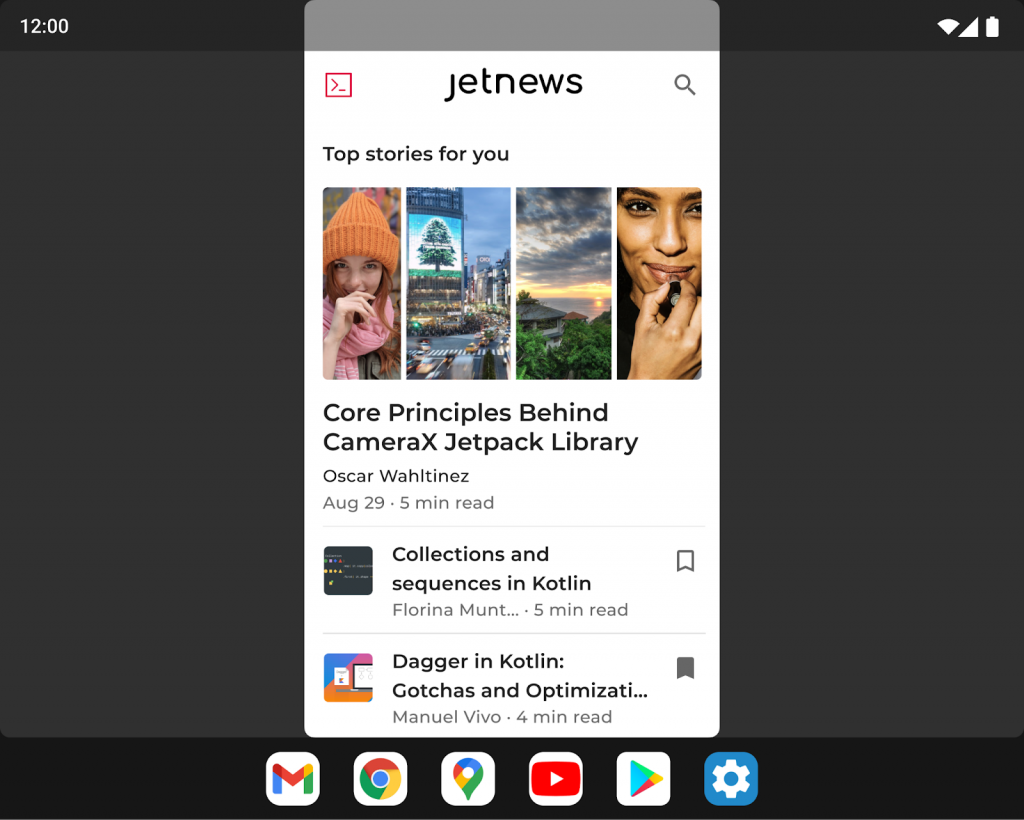Google’s annual Android Dev Summit began yesterday, and it normally sees the latest updates in Android development made public straight from the Android team themselves. Well, while Android 12 has already begun rolling out and even comes out of the box with the latest Pixel 6 and Pixel 6 Pro, one surprise the Android team had in store was Android 12L.
Just to be clear, Android 12L isn’t actually a brand new operating system. Google is calling 12L a special feature drop, with the goal of making Android 12 become better on devices with large screens, i.e. tablets and foldable smartphones for instance. Overall, the system UI would become more optimised and polished, with multitasking made more intuitive and powerful. There would be more compatibility support too for apps to look better.

One specific example of Android 12L improving user experience is a new two-column notification shade. This splits the Quick Settings shortcuts and your notifications into a simpler layout. Foldable devices specifically will see a new home screen grid with optimisations made for switching between a single screen to the larger unfolded screen.
The lockscreen can also be changed into a two-column layout to read your notifications, time and system widgets better. Unlocking your lock screen also no longer brings up a giant pattern control, instead moving the lock screen pattern and PIN control to the side of the screen for easier reach.

As for power users who’d like to make use of the extra real estate for multitasking, Android 12L makes split screen usage even easier with a new taskbar to easily launch and switch apps. You can simply pin your frequent apps to it, and have it open up on either side of the screen by dragging it next to the app you’re currently on. All apps on Android 12 itself will be able to make use of multi-window mode, even if they’re not resizable.
And while most apps right now are already optimised for larger displays, there remain some that have yet to be updated. Android 12L will handle that by adding a compatibility mode with visual and stability improvements, allowing these apps to not only look better but offer a better user experience too.

There’ll be a host of other changes too, like the Google Play Store having new checks in place to determine whether or not they’ve been optimised for bigger screens, so you’ll know if the app works for your device or not. Apps that haven’t been optimised will have a warning on its listing page when trying to download it on a tablet or foldable. There’ll be an app rating system in place specifically for large display devices too.
Android 12L will be dropping by early next year, but you’ll be able to play with it right now if you wish. The Android Developers website has a page for you to download and setup an Android 12L emulator via Android Studio. This would be especially handy if you’re a developer who might want to update your apps for tablets and foldables.
Curiously, Android 12L could be a hint that Google are planning their own foldable device. Rumours have been going around for awhile now that they’ve been planning the Pixel Fold, codenamed Passport, and that it’s due to launch by the end of the year. With Google introducing Android 12L as a solution for tablets and foldables, it would be interesting to see if they follow it up with hardware of their own.
For more information on Android 12L, you can check out the 12L Developer Preview on the Android Developers website.








